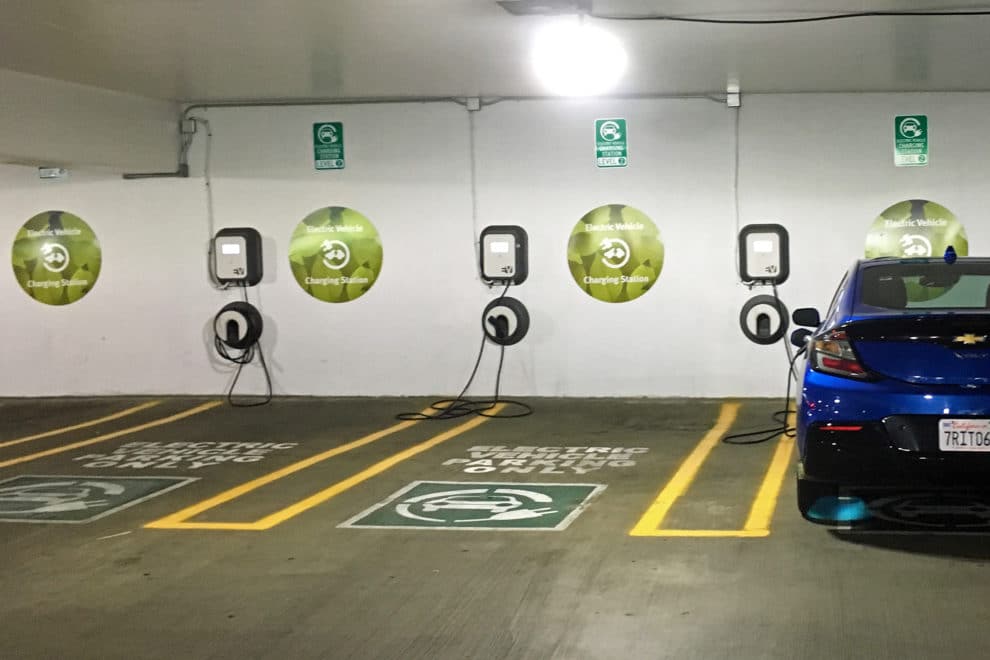
E-mobility is on the path to global dominance. The International Energy Agency (IEA) anticipates that there will be around 125 million electric vehicles on the road by 2030. This is also acknowledged to be a conservative estimate. According to other predictions, the number may be closer to 220 million.
The number of stakeholders in play is colossal. We have the vehicle manufacturers, governments, local authorities, private charging companies, retailers, hospitality brands, tech startups, and utility/energy providers. The variety of interested parties has created a chaotic environment, with mixed standards.
This messy landscape provides uncertainty, but also opportunity. It’s a competitive environment, but commercial success can be achieved. In this article, we will look briefly at how major brands are entering the market, and we will focus on three main business models in EV charging.
EV Charging Stations
It’s true that most electric vehicles are charged at home. The other popular location is at workplaces. Improvements in battery technology have enhanced the distance range of electric cars, but this hasn’t removed the necessity for public charging stations near motorways and public spaces.
Importantly, not everyone will have the space or access for a charger at home. This will change the dynamic as more people buy electric cars. According to research by McKinsey:
“In the European Union, as EVs go mainstream, charging will likely shift toward public options and away from the home over time, with the share of home charging declining from approximately 75 percent in 2020 to about 40 percent by 2030. That’s because more middle-and lower-income households without home-charging options will buy EVs from 2020 onward. The structural limitations of highly dense urban cities, which have larger proportions of on-street and large-commercial-garage parking, are the catalysts for increased public-charging demand.”
With this in mind, it’s important to remember that we’re just at the start of something special. In an article for Forbes, Sarwant Singh outlines some of the moves that industry players have been making:
“As potentially the largest beneficiaries of the EV market, energy and petrochemical companies are committed to expanding charging infrastructure and have started investing heavily in charging stations. Reflective of such strategic intent, Shell acquired ‘The New Motion’, the largest infrastructure operator in the Netherlands, which owns a network of 30,000 charging stations.”
There is energetic activity in multiple industries connected to e-mobility, and this permeates lots of different areas of the charging sphere:
“The issue as we see it though it not just about adding more charging stations. It’s also about developing charging technology. So, what’s next for this piece of the EV puzzle? We believe that ultra-fast charging and inductive charging will be the next wave. Several premium car manufacturers including Audi, BMW, Daimler, and Porsche have stated their objective to introduce 250kW+ ultra-fast charging systems as they bid to compete with Tesla’s proprietary super-charging system.”
So, the market is yet to find its feet – but it’s moving quickly. Presently, there is a lack of technical standardisation, and uncertainty about how demand will impact grid capacity. There is a hesitation to open up closed networks, and there is an ambition to integrate renewable energy sources. The situation is somewhat unclear, but we cannot ignore the opportunities.
Let’s take a look at three possible business models for EV charging brands, mainly focused on methods of monetisation. These might apply to any of the key stakeholders.
1. Ad-Hoc Payments
Many EV charging brands operate with a closed system, only allowing access to members. More on this later. To open up an EV charging station to more potential customers and improve convenience for all travellers on the roads and motorways, it is essential to offer an ad-hoc payment option.
We have worked on a solution for ad-hoc EV charging with Autobahn Tank & Rast, the leading motorway service operator in Germany. CCV terminals were installed on charging stations, allowing the customer to pay via contactless credit or debit card. This also opens up the stations to international visitors who are travelling in EVs; they don’t need to be a member of a specific German network to access power.
The front-end needn’t be limited to card payments. Terminals could also accept mobile wallet payments and operators can integrate eCommerce, whereby the customer scans a QR code or obtains geographic verification. This allows the driver to pay securely online through a mobile website.
Regardless of the method, the important thing to note is that the infrastructure exists to accept ad-hoc payments in a multitude of ways. EV charging brands have the option of imposing a price on a charge, and monetising their installations through this route.
2. Recurring Loyalty
This is where a particular brand owns a network of EV stations, or has a network of partner stations that members can access. Typically, the EV owner will register themselves online to provide payment details.
This can be operated on a subscription basis, whereby the customer pays for their membership and gets free charges, or it can enable tokenised access for one-off payments. Conditional logic could also be applied; for permission to charge during off-peak hours, or allowing a certain speed of charge. Credits could be deducted from an account, or the driver could get a certain number of free charges per month.
This system could be integrated into a holistic payments environment, whereby the EV charging stations are just a small part of the package. Tokenised payment credentials could provide flexibility and cashless access to refreshments, vending, car maintenance and repair, car washes, and many other services.
The recurring loyalty model requires a certain level of brand recognition and geographical coverage to succeed, so is probably only a realistic option for the bigger players.
3. Free Access
EV charging stations can be seen as an investment in the business, without direct monetary returns. Indeed, this option is very popular in the market at the moment. Why? Well…
- PR: Brands can get very good exposure for investing in the EV market, especially when it aligns with their target audience’s core values. An investment in sustainability is admirable. Until now, it has been a newsworthy event to install this technology and offer it for free to the public. It is a fantastic marketing opportunity, but it won’t be for much longer as EVs become ubiquitous in our society.
- Added value: We are already seeing workplaces provide added value to employees with on-site EV charging points, and this also occurs elsewhere. For service stations, restaurants, cafes, cinemas, retail parks, and gyms, EV charging could be the perfect way to increase footfall and provide a much-needed service to existing customers. McDonald’s have done this in the Netherlands in partnership with Nuon, using stations that are driven by wind power.
- Data collection and advertising: Perhaps not feasible as a primary monetisation technique, but EV charging operators could “gate” charging access with an interactive survey or questionnaire. This space could be sold to research companies or brands, or the operator could gather insights and monetise the datasets. Alternatively, this valuable space can be sold to advertisers for media placements.
Alternative and Visionary Options
The Shell-acquired brand, NewMotion, have offered an interesting idea in their industry outlook, whereby private EV charging installations could be opened up to the public for a fee when they’re not being used by their owners. The platform could potentially handle matching, and contain its own payment infrastructure – much like hiring out properties on Airbnb.
There is also excitement about the prospect of wireless charging. Whilst this might seem mundane at first glance, wireless EV charging could actually be a game-changer. Magnetic coils could be installed under roads by government authorities or private firms, or inserted under parking spaces by off-street parking brands. All of a sudden, private homeowners may be paying contractors to install a wireless charging point under their driveway. Watch this space, because wireless is gaining traction.
Summary
At this stage, it’s not certain who will emerge as the long-term key players in the EV charging market. Many experts are backing the utilities to come out on top. After all, they’re very used to selling electricity and could have the edge. Indeed, huge corporates are stepping into the fray to make their mark, but this doesn’t mean that startups will be forced out. This is a vibrant industry that is just getting going, and we will see plenty of innovation in the next decade.
Read the original article on CCV's website.
About CCV (www.ccv.eu)
CCV gives businesses new opportunities and facilities by enriching their payment process.  It makes the future of payment possible today, by supporting payment everywhere and at all times: offline and online, with money or loyalty points. Not just in the Netherlands, but also in Europe, so that companies can get the most out of their business.
It makes the future of payment possible today, by supporting payment everywhere and at all times: offline and online, with money or loyalty points. Not just in the Netherlands, but also in Europe, so that companies can get the most out of their business.





